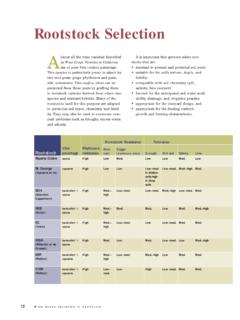Transcription of IV and Drug Calculations for Busy Paramedics
1 1 IV and drug Calculations for busy Paramedics By Kent R. Spitler, MSEd, RN, NREMT-P EMS Educator Charlotte, North Carolina Introduction Medication Calculations can cause frustration for EMS providers. Math and pharmacology can make it difficult to succeed on course exams, in the clinical setting, and in the field. There is a solution to make medication Calculations easier. The answer to this problem is simple by showing students how to perform Calculations using a simple process. While there are plenty of good drug and solution textbooks, study guides, and presentations available showing the methods of medication Calculations , It seems that it much of it causes mathematical confusion often called math mental blocks for many EMS providers. There are only a few drug Calculations necessary in the prehospital setting. These Calculations include IV drip rates, IV piggyback infusion, IM and Subcutaneous injection. A good review of the metric system is in order here since medicine is based on this measurement system.
2 It is necessary to practice drug Calculations on a regular basis to gain a comfort level with the methods. The best way to achieve this comfort level is to practice medication Calculations 30 minutes a day for six months and it will come natural after while. Common abbreviations are used in medication administration for all medical fields. Below is a list of some abbreviations that are found in drug Calculations used in the prehospital setting: Gram = Mass 5 cc = 1 tsp gtts/ml = Drops per milliliter Meter = Length 15 cc = 1 TBS or 3 tsp gtts/min = Drops per minute Liter = Volume 30 cc = 1 ounce Gm = Grams 30 cc = 2 TBS Gtts = Drops 60 mg = 1 Grain Hr = Hour 1 Gram = 15 Grains IVPB = Intravenous Piggyback X = Multiply Mcg = Micrograms x = Unknown answer Min = Minute / = Per or Each Conversion Convert grams to milligrams: multiply X 1000 Convert liters to milliliters: multiply X 1000 Convert milligrams to grams: divide by 1000 Convert milliliters to liters.
3 Multiply X 1000 Mg = Milligrams = Divide Ml = Milliliters - = Minus Don t forget where to place the decimal Table 1 It is assumed that the reader has an understanding of general mathematics. It also assumed that the reader has a general understanding of the metric system as it relates to medicine and drug Calculations . This Download by EMS Solutions - 2 IV Drip Rate Calculations IV Calculations are easier than they appear. There are four common drip sets in two categories: minidrip set which includes microdrip or pediatric set, and regular drip set which include macrodrip or adult sets. The various drip sets are as follows: 60 gtts/ml minidrip drip set 10 gtts/ml regular drip set 15 gtts/ml regular drip set 20 gtts/ml regular drip set (this set is sometimes used, but it s not as popular) Next, think about where these numbers came from for use in medicine.
4 Since there are 60 minutes in one hour and 60 seconds in one minute, it appears natural to calculate drip rates based on the clock. There is one (1) 60 minute period in one hour There are six (6) 10 minute periods in one hour There are four (4) 15 minute periods in one hour There are three (3) 20 minute periods in one hour It makes sense doesn t it? When calculating IV drip rates all that needs to be done is divide the amount to be infused over one (1) hour by how many time periods the drip set has in one (1) hour based on the clock. 6060 gtts/ml set If infusing 60 ml/hr using a 60 gtts/ml set divide 60 by 1 (1 60 minute period) which is 60 or 60 gtts/min. 451530 20 40 10 50 10 gtts/ml set 15 gtts/ml set 20 gtts/ml set If infusing 60 ml/hr using a 10 gtts/ml set divide 60 by 6 (6 - 10 minute periods) which is 10 or 10 gtts/min.
5 If infusing 60 ml/hr using a 15 gtts/ml set divide 60 by 4 (4 - 15 minute periods) which is 15 or 15 gtts/min. If infusing 60 ml/hr using a 20 gtts/ml set divide 60 by 3 (3 - 20 minute periods) which is 20 or 20 gtts/min. The Calculations are based on the following formula: Amount to be infused X drip set = x gtts/min Time (in minutes) Figure 1 This Download by EMS Solutions - 3 Minidrip (Pediatric or Microdrip) Set - 60 drops per milliliter How do we arrive at the correct answer? Let s look at the other methods and see if it makes sense. Think about the 60 drop per milliliter set (60 gtts/ml.) Now think about the answer you want which drops per minute. A protocol or medical control will give you fluid amounts to administer most commonly in ml/hr. You already have the amount and the time to be infused. All you do now is choose the appropriate drip set, using a simple formula you can come up with a quick answer: Looking at an example, your medical control states you need to establish an IV on a cardiac patient complaining of chest pressure at a rate of 80 ml/hr using a 500 ml bag of Normal Saline solution.
6 The drip set you choose is a 60 gtts/ml minidrip set. The formula is as follows: When calculating IV drip rates remember that you can reduce to the lowest common denominator by dividing the same number into both the numerator and the denominator to make your Calculations much easier. All samples shown from now on demonstrate this throughout. Simply remember that the numbers are consistent with the 60 minute clock and you will catch on rather quickly. The sample problems will show you by dividing the same number into the drip set and the time. As you see the answer is 80 or 80 gtts/min. 60 goes into 60 once (1). Divide 60 into 60 on the top and bottom. Let s look at the problem again and see how simple it really is: The only thing necessary is to do is cancel out the 60 on the top line and the bottom line. This leaves you with 1. Thinking this way will make it easier for you any time a 60 gtts/ml drip set is used.
7 Just divide the amount of solution per hour by 1 and the number that is left is your answer in drops per minute. All you need to do is plug in the amount to be given over an hour. REGULAR DRIP SET 10 DROPS PER MILLILITER Taking a look at the 10 gtts/ml regular drip set we need to think, how many 10 minute periods are in one hour? The answer is 6. (see page 2.) The objective here is that there are larger drops leading to less drops per minute. In the problem below, 10 goes into 10 once and 10 goes into 60 six times. Using the same formula as we did with the 60 gtts/ml set the problem is as follows: Amount of Solution (in ml) X drip set (gtts/ml) = x drops/min (gtts/min) 80 ml (amount) X 60 gtts/ml (drip set) 60 (divided my time in minutes over 1 hour) 4800 60 == 80 gtts/min 80 ml X 60 1 gtts/ml set 60 1 min 80 X 1 1 = 80 1 = 80 or 80 gtts/min 80 ml (amount) X 10 gtts/ml (drip set) 60 (divided my time in minutes over 1 hour) = = 80 X 10 1 60 6 80 X 1 6 = 80 6 = or 13 gtts/minDivide 60 into 4800 This Download by EMS Solutions - 4 80 divided by 6 is or 13 gtts/min.
8 Now to it even simpler, every time you use a 10 gtts/ml regular drip set just divide the amount by 6 since they re six 10 minute time periods in one hour. All you need to do is plug in the amount of fluid per hour. The two remaining regular drip sets are the 15 gtts/ml set and the 20 gtts/ml set. Remember, all you need to do is figure out how many time periods the drip set has in one hour (don t forget the clock.) The 15 gtts/ml drip set is related to four 15 minute time periods in one hour which means we divide the amount per hour by 4. 15 goes into 15 once and 15 goes into 60 four times resulting as 80/4 leaving us with the answer of 20. Observe the example below: So any time you use a 15 gtts/ml drip set just divide the amount of solution per hour by 4. The 20 gtts/ml drip set is calculated the same way except you divide by 3 since there are three 20 minute periods in one hour. 20 goes into 20 once and 20 goes into 60 three times.
9 Observe the example below: The answer is or rounded off to 27 gtts/minute. This means all you need to do is divide the amount of solution per hour by 3 to get the gtts/min. Summary Drip sets used in medicine are based on the 60 minute clock for timing and Calculations . All you need to do is divide the amount to be infused each hour by how many time periods the drip set has in one hour which is based on the clock. The drip sets include the minidrip set, 60 gtts/ml, and three regular drip sets which include the 10 gtts/ml set, 15 gtt/ml set, and the 20 gtts/ml set. There is one (1) 60 minute period in one hour, six (6) 10 minute periods in one hour, four (4) 15 minute periods in one hour, and three (3) 20 minute periods in one hour. When reducing fractions to allow easier Calculations remember to divide the same number into both the numerator and the denominator to arrive at the lowest common denominator.
10 Thinking about the problems presented you must divide the same number into the drops per milliliter and the time (in minutes.) 80 6 = or 13 gtts/min 80 ml (amount) X 15 gtts/ml (drip set) 60 (divided my time in minutes over 1 hour) 80 X 15 1 60 4 = = 80 X 1 4 80 4 = = 20 gtts/min 80 6 = 20 gtts/min 80 ml (amount) X 20 gtts/ml (drip set) 60 (divided my time in minutes over 1 hour) = 80 X 20 1 60 3 80 X 1 3 = = 80 3 = This Download by EMS Solutions - 5 60 goes into 60 = 1 10 goes into 10 = 1 15 goes into 15 = 1 20 goes into 20 = 1 60 goes into 60 = 1 10 goes into 60 = 6 15 goes into 60 = 4 20 goes into 60 = 3 Looking at these examples you notice that there is a pattern the stays the same. Since there are only four (4) different IV drip sets available, all you have to do is just insert the amount of solution to be delivered over one (1) hour. When setting up each problem remember all you have to do is divide the number of periods each drip set has in the 60 minute clock and divide that number into the amount of solution to delivered in one (1) hour.
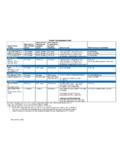
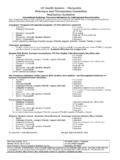
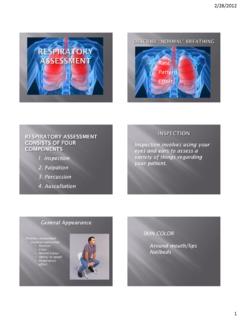
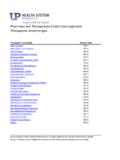
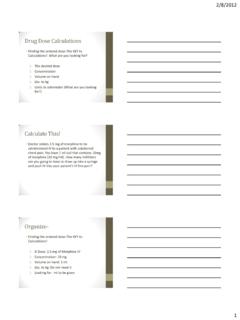

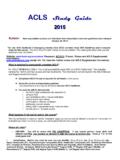

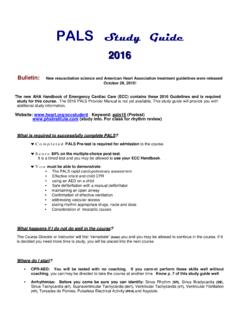

![CFED Phase IV Final Report V[10]](/cache/preview/a/4/7/c/4/e/0/f/thumb-a47c4e0fdbaba3f9a2b52c184a425d9f.jpg)
